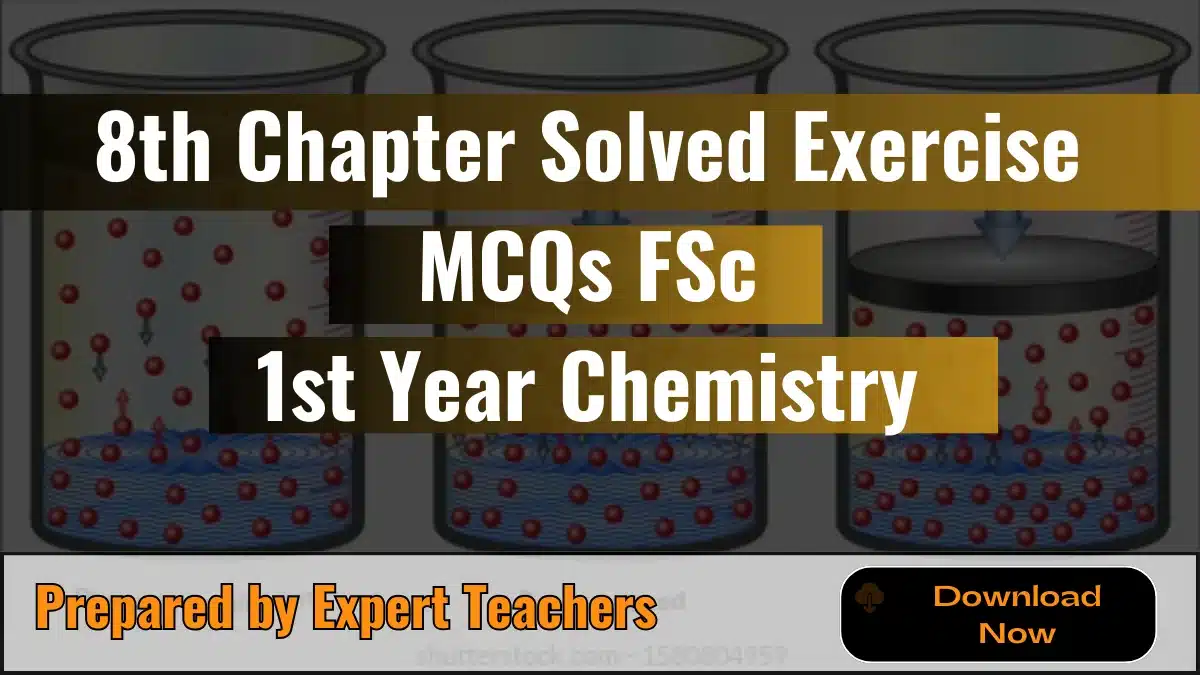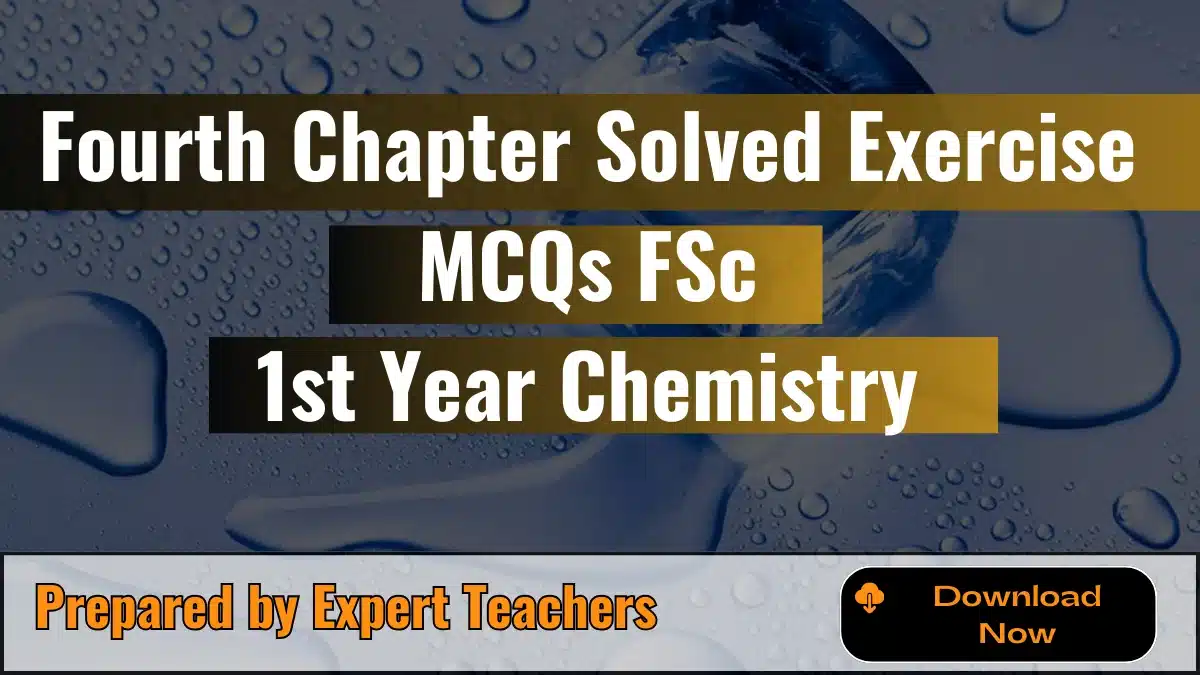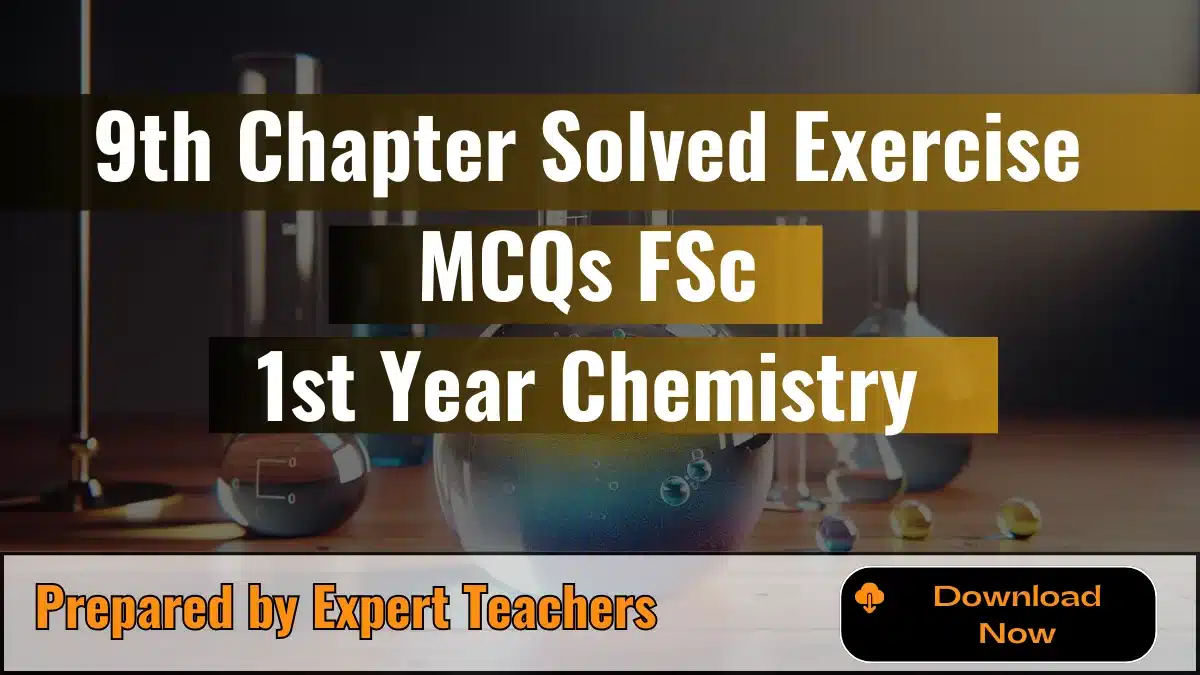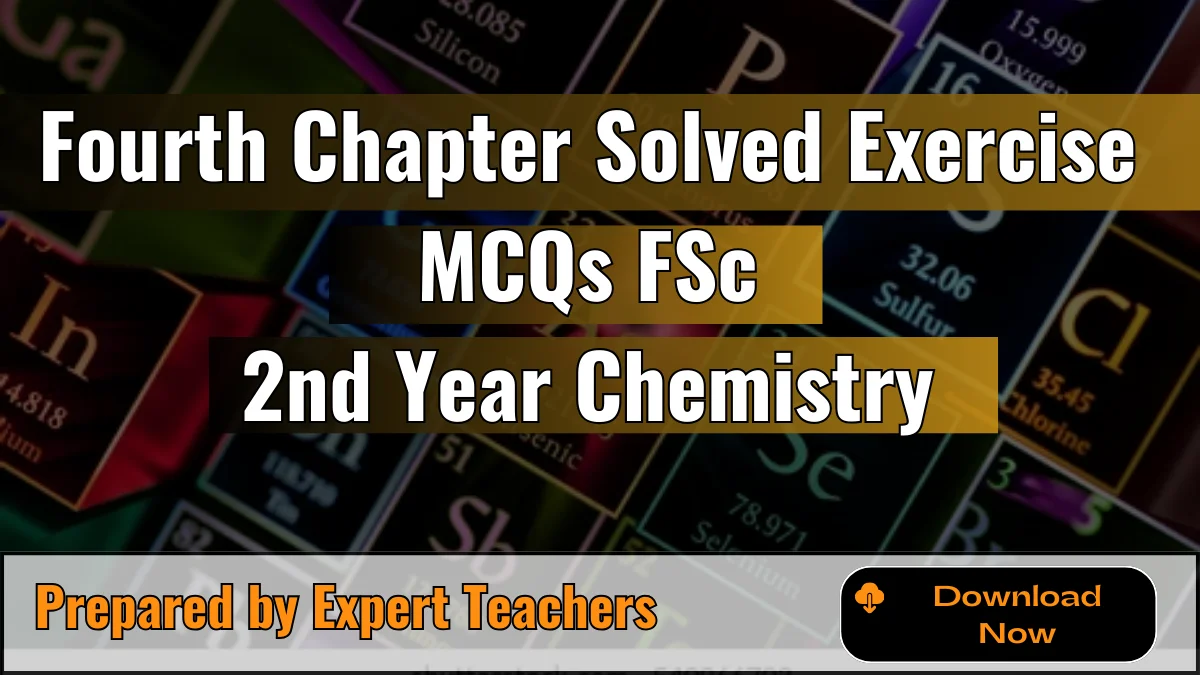Seventh Chapter Solved Exercise MCQs of FSC Second Year Chemistry
The 7th Chapter Solved Exercise MCQs of FSC 2nd-year Chemistry provides a complete set of solved multiple-choice questions (MCQs). Each MCQ comes with a brief explanation to help you understand the correct answer. These solutions are designed to support students in preparing for their exams, making complex concepts easier to grasp and ensuring a solid foundation for success.
Seventh chapter solved MCQs with explanation
1. The state of hybridization of carbon atom in methane is:
(a) sp³
(b) sp²
(c) sp
(d) dsp²
Explanation: Option (a) is correct. Because In methane (CH₄), the carbon atom forms four single bonds with four hydrogen atoms. To make these bonds, carbon undergoes sp³ hybridization by mixing one 2s and three 2p orbitals, creating four equivalent sp³ orbitals. These orbitals overlap with the 1s orbitals of hydrogen atoms to form four sigma (σ) bonds, resulting in a tetrahedral shape with bond angles of about 109.5°.
2. In t-butyl alcohol, the tertiary carbon is bonded to:
(a) two hydrogen atoms
(b) three hydrogen atoms
(c) one hydrogen atom
(d) no hydrogen atom
Explanation: Option (d) is correct. In t-butyl alcohol, the tertiary carbon is attached to three other carbon atoms and an –OH group. Since all its bonds are already occupied, there are no hydrogens attached to this carbon.
3. Which set of hybrid orbitals has a planar triangular shape?
(a) sp³
(b) sp
(c) sp²
(d) dsp²
Explanation: Option (c) is correct. Because:
- sp² hybridization involves mixing one s orbital and two p orbitals, creating three sp² hybrid orbitals arranged in a trigonal planar shape with 120° bond angles. This shape is flat (planar), like in molecules such as ethene (C₂H₄).
- sp³ has a tetrahedral shape with 109.5° angles.
- sp is a linear shape with 180° angles.
- dsp² is square planar in shape.
4. The chemist who synthesized urea from ammonium cyanate was:
(a) Berzelius
(b) Kolbe
(c) Wöhler
(d) Lavoisier
Explanation: Option (c) is correct. Because Friedrich Wöhler synthesized urea from ammonium cyanate in 1828, demonstrating that organic compounds could be made from inorganic substances. This disproved the idea that organic compounds could only be produced by living organisms.
5. Linear shape is associated with which set of hybrid orbitals?
(a) sp
(b) sp²
(c) sp³
(d) dsp²
Explanation: Option (a) is correct. Because sp hybrid orbitals form a linear shape with a bond angle of 180°. This occurs when one s orbital and one p orbital mix, like in carbon dioxide (CO₂).
6. A double bond consists of:
(a) two sigma bonds
(b) one sigma and one pi bond
(c) one sigma and two pi bonds
(d) two pi bonds
Explanation: Option (b) is correct. Because A double bond in chemistry is composed of one sigma (σ) bond and one pi (π) bond. The sigma bond is formed by the end-to-end overlap of atomic orbitals, while the pi bond results from the side-to-side overlap of p orbitals.
7. Ethers show the phenomenon of:
(a) position isomerism
(b) functional group isomerism
(c) metamerism
(d) cis-trans isomerism
Explanation: Option (c) is correct. Because Ethers can have different alkyl or aryl groups attached to the same oxygen atom, resulting in compounds with the same molecular formula but different structures due to varying alkyl group arrangements, an example of metamerism.
8. Select from the following the one which is an alcohol:
(a) CH₃-CH₂-OH
(b) CH₃-O-CH₃
(c) CH₃COOH
(d) CH₃-CH₂-Br
Explanation: Option (a) is correct. Because CH₃-CH₂-OH is ethanol, a type of alcohol characterized by the presence of a hydroxyl group (-OH) attached to a carbon atom.
Other options:
- CH3-O-CH3 is an ether (specifically, dimethyl ether) because it has an oxygen atom bonded to two carbon atoms.
- CH3COOH is acetic acid, a type of carboxylic acid.
- CH3-CH2-Br is ethyl bromide, which is an alkyl halide







Leave a Reply